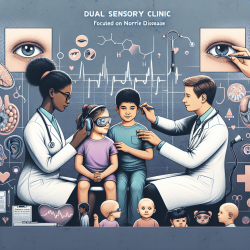Understanding the Implications of BRAF V600E Mutation in Rare Brain Tumors
In the realm of pediatric neuro-oncology, the discovery of unique genetic mutations can significantly impact diagnostic and therapeutic approaches. A recent study, "Composite pleomorphic xanthoastrocytoma-epithelioid glioneuronal tumor with BRAF V600E mutation – report of three cases," sheds light on the complexities of these rare brain tumors and offers valuable insights for practitioners.
The Study at a Glance
This study focuses on three cases of composite pleomorphic xanthoastrocytoma-epithelioid glioneuronal tumors (PXA-EGT) in young adults. These tumors, characterized by their biphasic nature and the presence of the BRAF V600E mutation, challenge traditional diagnostic categories and suggest a common origin for the tumor components.
Key Findings and Their Implications
- BRAF V600E Mutation: The presence of this mutation in both PXA and EGT components of the tumors suggests a shared origin, rather than a collision of disparate elements. This finding could refine diagnostic criteria and influence treatment plans.
- Histomorphological Diversity: The study highlights the unique histomorphological combination of neuroepithelial elements in these tumors, expanding the known spectrum of glial neoplasia. Understanding these patterns is crucial for accurate diagnosis and management.
- Potential for Further Research: The study opens avenues for further research into the genetic and molecular underpinnings of these tumors, potentially leading to targeted therapies and improved patient outcomes.
Practical Applications for Practitioners
For practitioners, the insights from this study underscore the importance of genetic testing in the diagnosis and management of pediatric brain tumors. The identification of the BRAF V600E mutation can guide treatment decisions and prognostic assessments.
Moreover, the study encourages a multidisciplinary approach, integrating neuropathological, genetic, and clinical expertise to optimize patient care. By staying informed about the latest research, practitioners can enhance their diagnostic acumen and contribute to the evolving landscape of pediatric neuro-oncology.
Encouraging Further Research
This study serves as a catalyst for further research into the genetic landscape of rare brain tumors. By exploring the molecular mechanisms underlying these neoplasms, researchers can develop novel therapeutic strategies and improve outcomes for young patients.
As practitioners, engaging with the latest research not only enhances clinical practice but also contributes to the broader scientific community's understanding of these complex conditions.
To read the original research paper, please follow this link: Composite pleomorphic xanthoastrocytoma-epithelioid glioneuronal tumor with BRAF V600E mutation – report of three cases.










